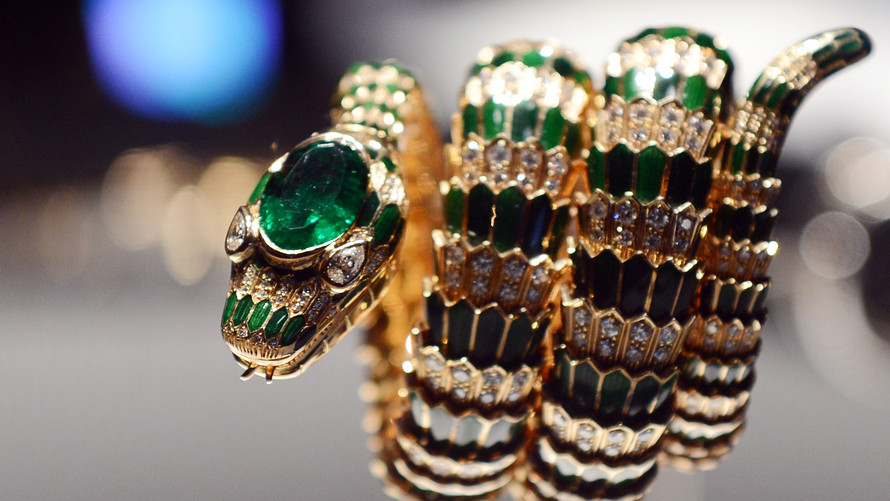
Gold futures notched a gain on Thursday, with the precious metal finding some haven demand alongside a weaker dollar index and sharp tumble in stock trading.
“If gold was ever going to stage a meaningful rally it will be now: stocks and yields are falling and dollar is isn’t doing too great either, apart from against commodity currencies, owing to the ongoing risk-off trade,” said Fawad Razaqzada, technical analyst with Forex.com.
Prices, however, only managed to edge up for the session as traders awaited cues on the Federal Reserve’s pace of interest-rate hikes from the U.S. jobs data Friday.
Gold for February delivery GCG9, +0.17% rose $1, or less than 0.1%, to settle at $1,243.60 an ounce. It had touched a high of $1,249.90, teasing the highest for a most-active contract since the first half of July, FactSet data show. March silver SIH9, +0.52% fell 7.3 cents, or 0.5%, to $14.509 an ounce—extending its modest 0.4% decline from Wednesday.
The ICE U.S. Dollar Index DXY, +0.06% was last down 0.4%, on its way to a 0.6% weekly decline. Typically, a weaker buck lifts investment demand for dollar-priced commodities, like gold, and vice versa.
Benchmark U.S. stock indexes tumbled Thursday, with selling so intense at one point that circuit breakers were triggered, after the arrest of a China-based Huawei executive reignited the trade worries that had helped drag equities to their worst session since early October earlier this week.
“As is frequently the case, gold can suffer in the initial market sell off and be correlated with risk assets,” said Mark O’Byrne, research director at GoldCore. “However, it tends to bottom quicker and bounce and display an inverse correlation to risk assets. This is especially the case over the long term—meaning a quarterly or annual basis.”
Concern about a possible U.S. recession and an inversion for at least part of the Treasury yield curve, with 10-year Treasury yields TMUBMUSD10Y, +0.06% at a three-month low below 3%, have pressured the greenback. In turn, gold has recovered about 5% from the 19-month lows hit in mid-August.
Some signs of gold’s haven status performing as expected emerged in exchange-traded fund data.
Gold-backed ETFs benefited in November from ongoing global stock market volatility, the underperformance of other commodities, such as oil, and geopolitical developments, the World Gold Council said in a release Thursday morning.
U.S. dollar flows into gold-backed ETFs, including the popular SPDR Gold Shares GLD, +0.02% are now positive for the year, having raised $354 million in November, a second straight month for inflows, the WGC reported. U.K. inflows to gold ETFs were also strong as Brexit concerns have ramped up alongside a softening in sterling, said Juan Carlos Artigas, the WGC’s director of investment research. The SPDR Gold Shares was up 0.1% Thursday after closing up 0.6% Wednesday.
“As market volatility continued and commodities like oil underperformed, global gold-backed ETFs saw a second month of inflows, rising by $804 million [in total] and reflecting a full reversal of what had been an outflow trend on the year,” Artigas said.
Job-market data, a key report for the Federal Reserve ahead of its last rate-setting meeting of 2018 on Dec. 18-19, will come into focus on Friday. ADP on Thursday reported that private employers added 179,000 jobs in November, in line with economists’ forecasts.
Attention remains on economic data for signs that the Fed can stick to its plan for continued modest rate increases — a gold-negative factor — into early next year. Markets have lost some confidence in the Fed’s likelihood to stick with this projected rate-hike path. See economic calendar
Data released Thursday showed that private-sector employment stayed strong in November, with employers adding 179,000 jobs, according to Automatic Data Processing. The Institute for Supply Management said Thursday that its nonmanufacturing index in November rose to a seasonally adjusted 60.7%—the second-strongest reading in 13 years.
“We expect rising precious metals prices next year because the U.S. dollar is likely to depreciate when the Fed rate hikes come to an end,” said Carsten Fristch and the commodities analysts at Commerzbank in their 2019 outlook. “Only palladium is unlikely to climb any further next year,” they added.
March palladium PAH9, +0.84% fell 3.6% to $1,141.90 an ounce, ending to a run of record settlements. The spot price for the metal tapped an intraday high of $1,258 Wednesday, according to data form Kitco, surpassing the price of gold.
January platinum PLF9, +0.13% fell nearly 1.6% to $789.60 an ounce and March copper HGH9, +0.49% fell 1.1% to $2.743 a pound.





























